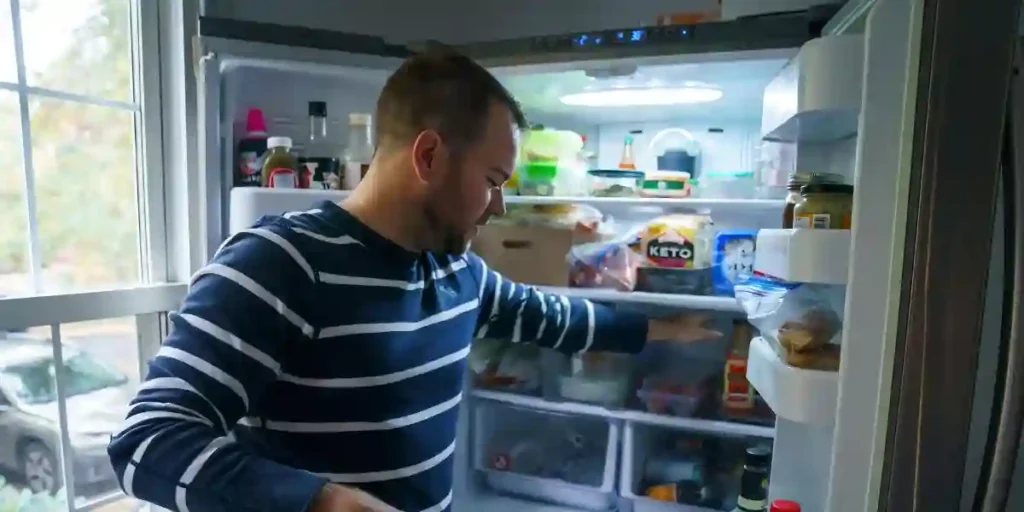Is your refrigerator struggling to keep things cool? Are you frustrated by its inability to maintain a lower temperature?
If your refrigerator only cools to 40 degrees, you’re not alone.
In this article, we’ll explore the possible causes behind this issue and provide troubleshooting tips to help you restore your refrigerator’s cooling efficiency.
Say goodbye to lukewarm beverages and spoiled food as we delve into the world of refrigeration and uncover the secrets to optimal cooling performance.
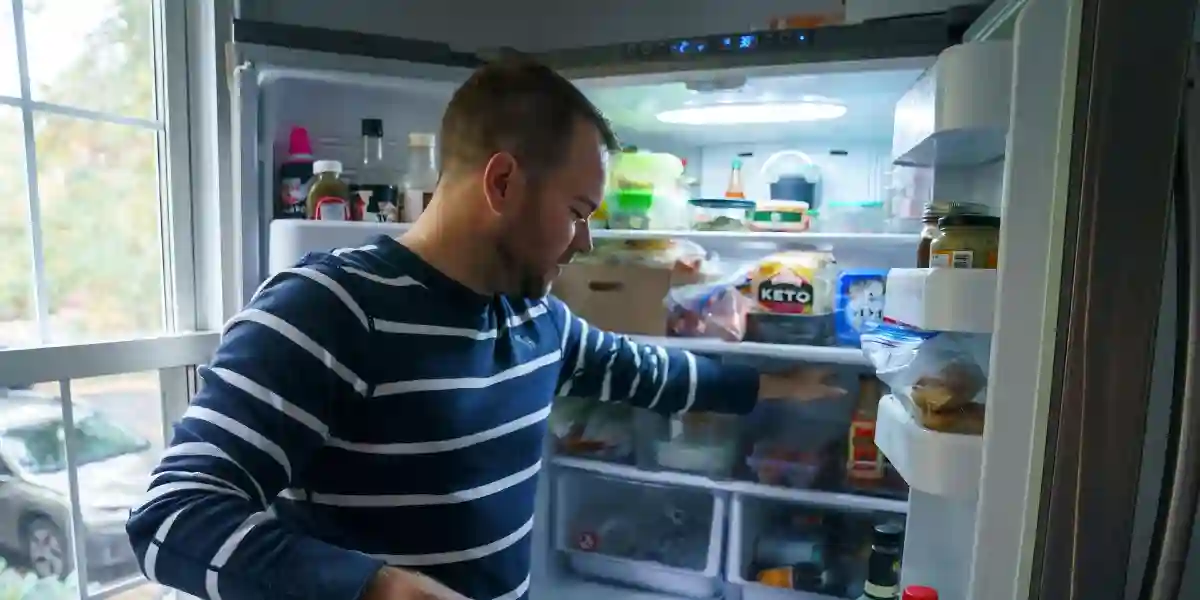
Why Is Your Refrigerator Only Cooling to 40 Degrees?
Your refrigerator may only cool to 40 degrees due to various reasons such as a faulty thermostat, inadequate airflow, or a malfunctioning compressor.
Check these components and consider calling a professional for repair if needed.
Possible Causes of Your Refrigerator Cooling Issue
Some possible causes can be:
1. Faulty Thermostat:
A malfunctioning thermostat can disrupt the cooling cycle of your refrigerator.
Check if the thermostat is set to the correct temperature and if it is functioning properly. If not, consider replacing it.
2. Inadequate Airflow:
Insufficient airflow can hinder the cooling process. Ensure that the vents inside the refrigerator are not blocked by food items or debris.
Additionally, check the condenser coils at the back of the fridge and clean them to improve airflow.
3. Malfunctioning Compressor:
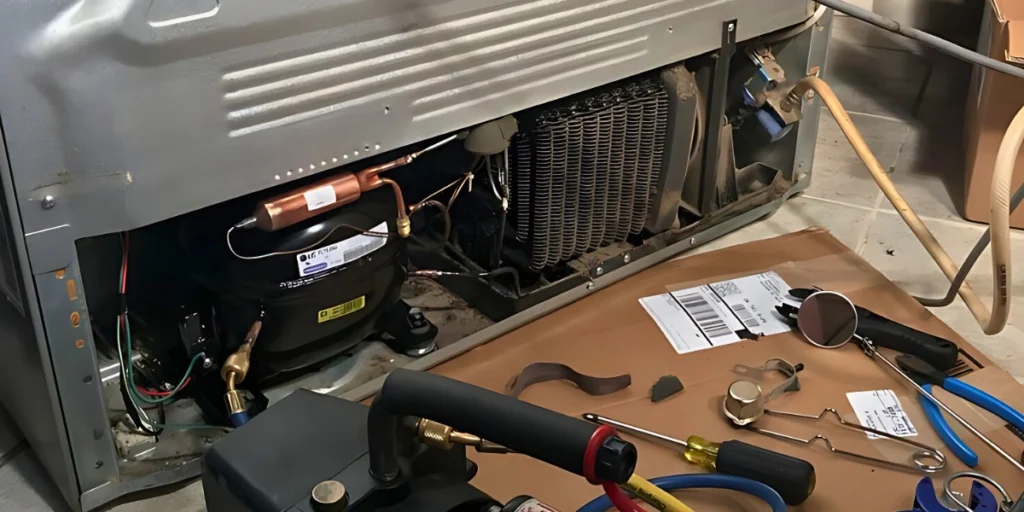
The compressor is responsible for circulating refrigerant and maintaining the desired temperature.
If the compressor is faulty, it may not be able to cool the refrigerator adequately. Consult a professional technician to diagnose and address compressor issues.
4. Refrigerant Leak:
A refrigerant leak can significantly impact the cooling performance of your refrigerator.
Look for any signs of leakage, such as oily residue or hissing sounds. If you suspect a leak, it’s essential to have it repaired by a qualified technician.
5. Door Seal Problems:
A faulty door seal can allow warm air to enter the refrigerator, causing it to struggle with cooling.
Inspect the door gasket for any tears, gaps, or debris and replace it if necessary to maintain a tight seal.
6. Overcrowding and Improper Food Placement:
Overloading the refrigerator with too many items can obstruct airflow and prevent proper cooling.
Ensure that there is enough space between items for cold air to circulate freely.
Additionally, avoid placing hot or warm food directly into the fridge, as it can raise the internal temperature.
7. Power Supply Issues:
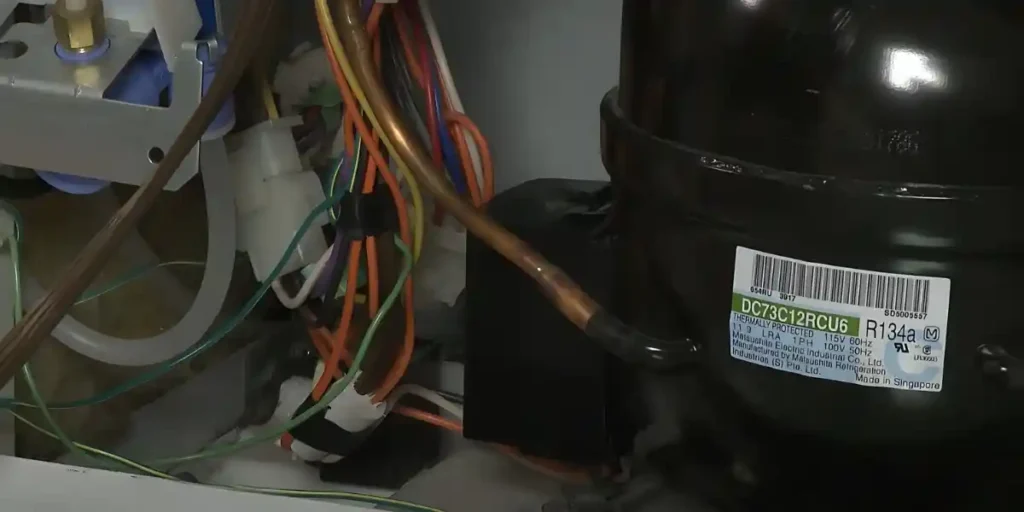
Check if the refrigerator is receiving a consistent power supply. Fluctuations in voltage or electrical problems can impact its cooling performance.
Consider plugging the appliance into a different outlet or consult an electrician to address any electrical issues.
Troubleshooting Steps to Fix a Refrigerator that Only Cools to 40 Degrees
By following these troubleshooting steps, you can increase the chances of resolving the cooling issue with your refrigerator:
1. Check and Adjust the Thermostat:
Start by examining the thermostat settings inside your refrigerator. Ensure that the thermostat is set to the appropriate temperature for cooling.
If it’s already set correctly, try adjusting it slightly lower to see if it improves the cooling performance. Give the refrigerator some time to stabilize after making changes.
2. Clean the Condenser Coils:
Dusty or dirty condenser coils can hinder the refrigerator’s ability to cool effectively.
Locate the condenser coils, usually found at the back or bottom of the fridge, and clean them thoroughly.
Use a soft brush or vacuum cleaner to remove any accumulated dirt, debris, or pet hair.
3. Check the Evaporator Fan:
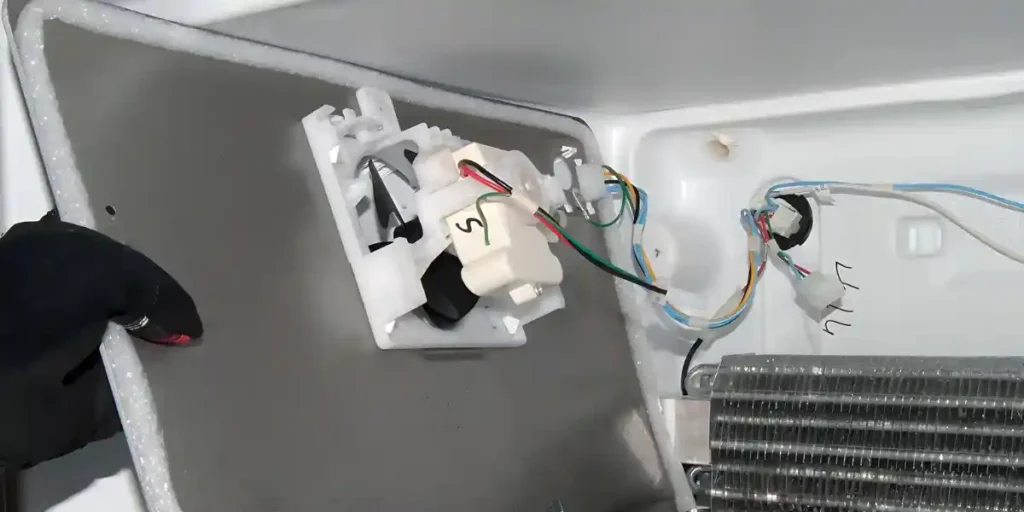
The evaporator fan is responsible for circulating the cold air throughout the refrigerator.
Open the freezer compartment and listen for the sound of the fan running. If you don’t hear it, there may be an issue with the fan motor.
Replace the fan motor if necessary to restore proper airflow and cooling.
4. Inspect the Door Seal:
A faulty door seal can allow warm air to enter the refrigerator, causing inadequate cooling.
Carefully examine the door gasket for any signs of damage, wear, or gaps. If you notice any issues, replace the door seal to ensure a tight and effective seal.
5. Clean Air Vents and Freezer Drain:
Blocked air vents or a clogged freezer drain can disrupt the cooling process.
Locate the air vents in both the refrigerator and freezer compartments and remove any obstructions such as food items or ice buildup.
Additionally, clear the freezer drain off any debris to allow proper water drainage.
6. Ensure Proper Air Circulation:
Overloading the refrigerator with too many items can obstruct the airflow and prevent proper cooling.
Rearrange the contents of your fridge to allow adequate space between items for air to circulate freely.
Avoid placing hot or warm food directly into the refrigerator as it can impact its cooling ability.
7. Verify Power Supply and Outlet:
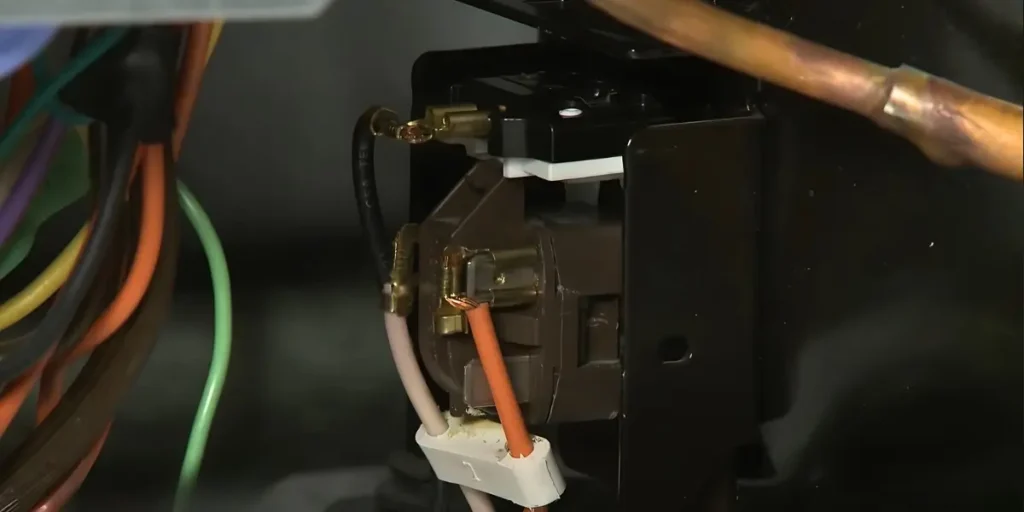
Ensure that the refrigerator is receiving a consistent power supply. Check the power cord for any damage or lose connections.
Plug the appliance into a different outlet to test if the current outlet is causing the cooling issue.
If the problem persists, consult an electrician to address any electrical problems.
8. Call a Professional Technician:
If you’ve tried the above steps and your refrigerator still only cools to 40 degrees, it’s advisable to seek assistance from a qualified refrigerator technician.
They have the expertise to diagnose and resolve complex cooling issues that may require specialized tools or parts.
How to Maintain Your Refrigerator for Optimal Cooling Efficiency?
By following these maintenance steps, you can ensure optimal cooling efficiency for your refrigerator:
1. Clean the Condenser Coils:
To maintain optimal cooling efficiency, regularly clean the condenser coils. Unplug the refrigerator and locate the coils, typically at the back or underneath the unit.
Use a vacuum cleaner or a brush to remove dust, debris, and pet hair from the coils. This allows for better heat transfer and prevents the compressor from overworking.
2. Check and Replace the Door Seals:
Inspect the door seals, or gaskets, for any signs of wear, cracks, or gaps. Damaged seals can lead to warm air seeping into the refrigerator, causing cooling issues.
Clean the seals with mild soap and warm water, ensuring they are free from debris. If the seals are compromised, consider replacing them to maintain an airtight seal.
3. Keep the Refrigerator Well-Organized:
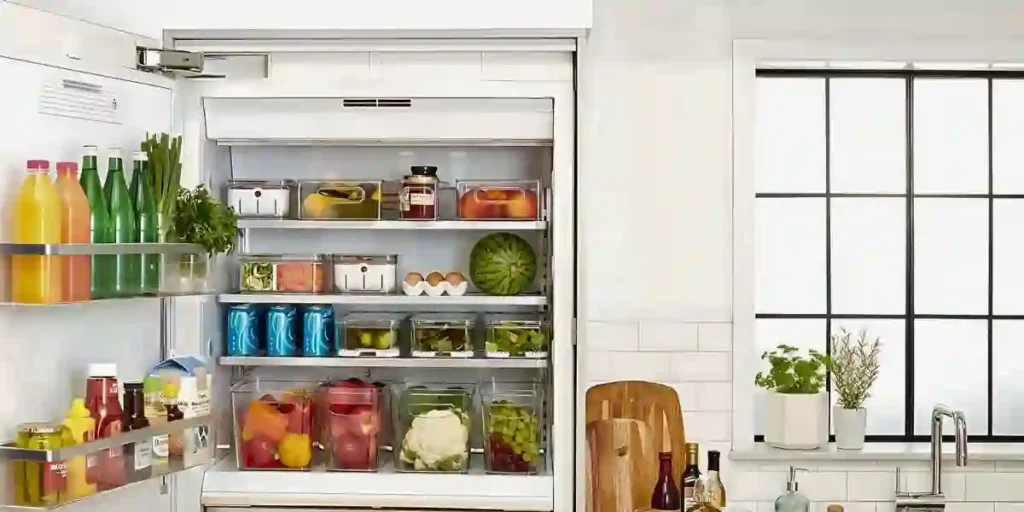
Proper organization inside the refrigerator can promote optimal cooling efficiency. Avoid overloading the shelves, as it restricts airflow and impedes the cooling process.
Allow sufficient space between food items for air to circulate freely. Group similar items together and use containers or bins to keep the refrigerator organized.
4. Clean the Evaporator Drain:
Over time, the evaporator drain in the freezer compartment can become clogged with debris and ice buildup.
To prevent water accumulation and potential cooling issues, locate the drain hole and remove any obstructions.
Use a mixture of warm water and mild detergent to flush out the drain and keep it clear.
5. Regularly Defrost the Freezer:
Frost buildup in the freezer can obstruct airflow and strain the cooling system. Defrost the freezer regularly to maintain optimal cooling efficiency.
Remove all items from the freezer, turn off the unit, and let the frost melt naturally.
Once defrosted, clean the interior and wipe away any remaining moisture before restarting the freezer.
6. Set the Temperature Correctly:
Check and adjust the temperature settings to ensure they are at the recommended levels for your refrigerator.
Ideally, the refrigerator compartment should be set between 35-38 degrees Fahrenheit (1-3 degrees Celsius), and the freezer compartment should be set between 0-5 degrees Fahrenheit (-18 to -15 degrees Celsius).
7. Avoid Placing Hot or Warm Food Inside:
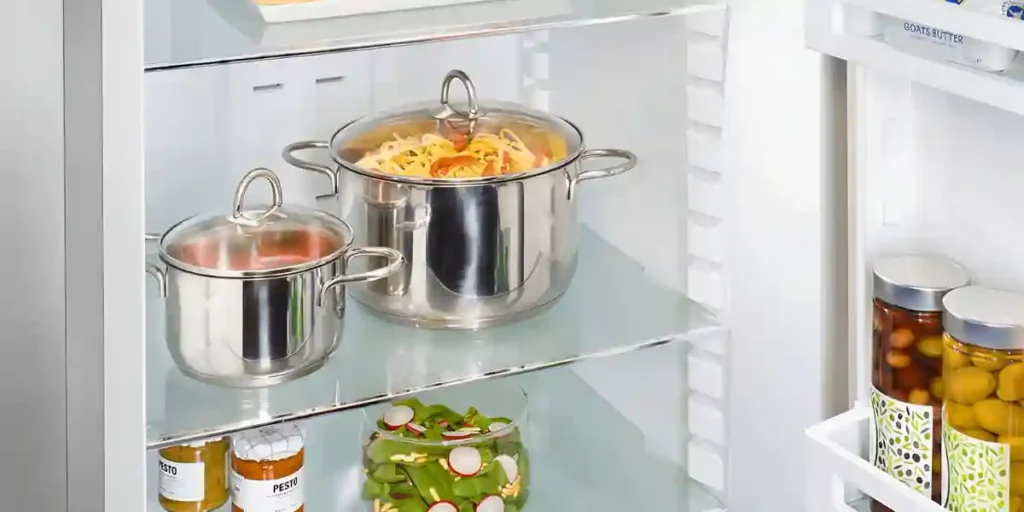
Allow hot or warm food to cool down before placing it inside the refrigerator. Introducing hot items can raise the internal temperature, making the refrigerator work harder to cool down.
Cover food items to minimize moisture evaporation and prevent the release of warm air.
8. Clean and Defrost the Ice Maker (if applicable):
If your refrigerator has an ice maker, regularly clean and defrost it to ensure proper functioning.
Follow the manufacturer’s instructions to remove and clean the ice bin, ice maker assembly, and water lines.
This helps maintain ice production efficiency and prevents any potential cooling problems associated with the ice maker.
FAQs
1. Can A Dirty Condenser Coil Affect Refrigerator Cooling?
Yes, a dirty condenser coil can restrict heat transfer and impact cooling efficiency. Regular cleaning is recommended.
2. What Should I Do If The Door Seal Is Damaged?
Replace the damaged door seal to ensure an airtight seal and prevent warm air from entering the refrigerator.
3. Is Overcrowding The Refrigerator A Common Cause Of Cooling Issues?
Yes, overloading the refrigerator with too many items can obstruct airflow and affect cooling performance.
4. Should I Defrost My Freezer Regularly To Maintain Cooling Efficiency?
Yes, regular defrosting helps prevent frost buildup, which can impede airflow and strain the cooling system.
5. When Should I Consider Calling A Professional For Refrigerator Cooling Issues?
If troubleshooting steps don’t resolve the problem, it’s best to consult a qualified refrigerator technician for further diagnosis and repair.
Conclusion
Keep your cool with a properly functioning refrigerator. If your refrigerator only cools to 40 degrees, troubleshoot by adjusting the thermostat, cleaning the condenser coils, and ensuring proper airflow.
Maintaining optimal cooling efficiency through regular maintenance can extend your fridge’s lifespan and ensure your food stays fresh.
Don’t let cooling issues spoil your groceries; take control and enjoy the benefits of a well-performing refrigerator.

